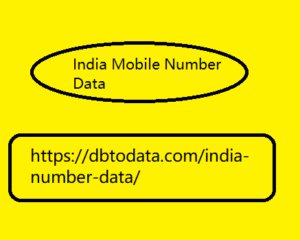Post by account_disabled on Mar 9, 2024 23:02:07 GMT -8
Generative artificial intelligence is talked about everywhere, but when it comes to applying new tools to the world of work I notice great confusion. For this reason, together with Raffaele Gaito we designed the masterclass " Practical AI: the co-pilot for your company ", a 6-hour live course (on 9 and 10 April) to show you, with concrete examples, how to bring AI into your business activity. The advantages of GenAI The advantages of generative AI are many, but the most important for those who want to immediately get their hands on it are: Efficiency : these tools allow us to do many more things in less time than we did in the past and obviously this also brings with it a reduction in costs; Enhancement of creativity : it might seem counterintuitive, but these tools help us to unblock ourselves in moments of stalemate and are valid assistants in proposing new ideas or ideas that we hadn't thought of.
Add to this the ability to make us create images, videos, music from simple textual India Mobile Number Data descriptions; Expansion of capabilities : GenAI tools are particularly useful for individual professionals or those with a small business who do not have the possibility of making use of large work teams. This is because they are designed to be used very easily and to enable abilities that are not innate in everyone. For example, not all of us are good designers or photographers, but with software like Midjourney we can manage, with little effort, to create professional images for our marketing materials; Competitiveness : learning to use generative artificial intelligence tools is a competitive advantage because it allows us to react faster to market changes, test new ideas and enrich the offer of products and lead generation materials. IA: Mistakes not to make The advantages of generative AI are enormous, but we must be careful not to fall into some pitfalls.

The most frequent errors are: Focus on the tool : It's easy to get caught up in the enthusiasm and focus excessively on the individual tool and its functions. We should, instead, learn to acquire a mindset, an approach that can be applied to any tool because tools pass or evolve, while the right mindset remains; Focus on the single activity : the second error is a consequence of the previous one. When we fixate on a single tool we are led to use it to solve a single problem. The best thing to do would be to start by analyzing our current workflows and try to understand what are the ideal solutions, not tools, to optimize it; Unrealistic expectations : We often start using generative AI tools thinking they can do everything. The right approach is to experiment with multiple tools, but always starting from our actual needs so that the tool does not distort them, but improves them; Thinking you have to be technicians : the term artificial intelligence could be scary because it is associated with technical skills that we think we don't have.
Add to this the ability to make us create images, videos, music from simple textual India Mobile Number Data descriptions; Expansion of capabilities : GenAI tools are particularly useful for individual professionals or those with a small business who do not have the possibility of making use of large work teams. This is because they are designed to be used very easily and to enable abilities that are not innate in everyone. For example, not all of us are good designers or photographers, but with software like Midjourney we can manage, with little effort, to create professional images for our marketing materials; Competitiveness : learning to use generative artificial intelligence tools is a competitive advantage because it allows us to react faster to market changes, test new ideas and enrich the offer of products and lead generation materials. IA: Mistakes not to make The advantages of generative AI are enormous, but we must be careful not to fall into some pitfalls.

The most frequent errors are: Focus on the tool : It's easy to get caught up in the enthusiasm and focus excessively on the individual tool and its functions. We should, instead, learn to acquire a mindset, an approach that can be applied to any tool because tools pass or evolve, while the right mindset remains; Focus on the single activity : the second error is a consequence of the previous one. When we fixate on a single tool we are led to use it to solve a single problem. The best thing to do would be to start by analyzing our current workflows and try to understand what are the ideal solutions, not tools, to optimize it; Unrealistic expectations : We often start using generative AI tools thinking they can do everything. The right approach is to experiment with multiple tools, but always starting from our actual needs so that the tool does not distort them, but improves them; Thinking you have to be technicians : the term artificial intelligence could be scary because it is associated with technical skills that we think we don't have.
